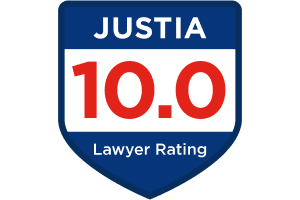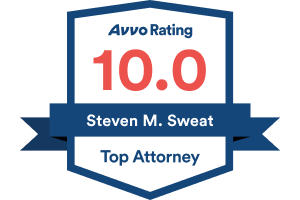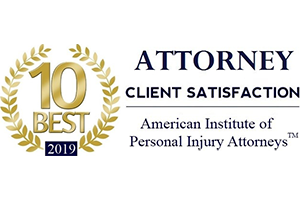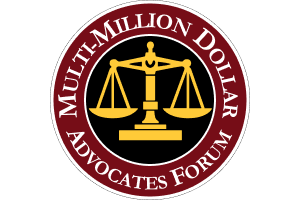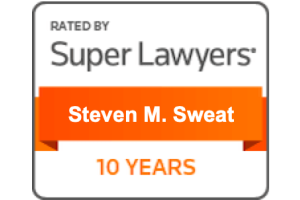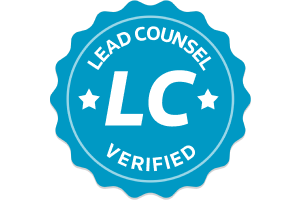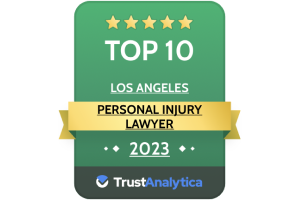- Free Consultation: 866-966-5240 Tap Here To Call Us
Woman Hit by Car At Fault for Jaywalking According the California Court
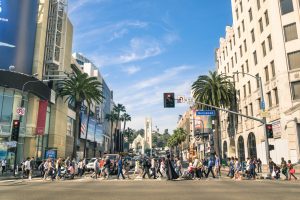
In some situations, California property owners may be liable for injuries that happen to people located off of their property. However, that is not always the case. In Issakhani v. Shadow Glen Homeowners Association, Inc., Cal. Ct. App. Case No. B301746, the California Court of Appeal considered whether a condominium complex owed a duty of care to a plaintiff who jaywalked across a busy street to reach the complex to visit her friend because the complex did not have enough marked visitor spaces.[1]
Factual and procedural background
Anaeis Issakhani went to visit a friend who lived at the Shadow Glen condominium complex in Los Angeles on the night of June 10, 2014, after dark. When she arrived, she did not see any available visitor parking space in the complex’s lot, so she parked her vehicle across a five-lane street in front of the complex. When she crossed the street, she failed to walk a few hundred feet to a marked crosswalk and instead jaywalked. A car struck her, causing her to suffer multiple fractures and a traumatic brain injury. Issakhani filed a lawsuit against the Shadow Glen condominium complex with negligence and premises liability causes of action. She alleged that the company was negligent by failing to install enough visitor spaces in the complex’s parking lot in violation of a municipal ordinance.
The complex was built in 1979 and had 68 residential units. At the time, the property was zoned as a single-family residence area. The developer applied for a variance to allow a mix of single- and multi-family units. The city granted the variance but required the developer to install an additional one-half parking space per unit so that there would be plenty of spaces for visitors to park. This meant that the complex needed to have 68 tenant parking spaces and 34 guest parking spaces. The complex built 170 spaces, which was 13 more than required.
When Issakhani’s accident happened, the complex still had 170 parking spaces. However, just six of the spaces were marked for visitors. Issakhani argued that the lack of spaces reserved for visitors created a foreseeable risk that visitors would park across the five-lane street and try to cross to visit their friends and potentially be hit by cars.
Shadow Glen filed a motion for summary judgment. After a hearing, the trial court ruled that Shadow Glen did not owe a duty of care to the plaintiff and dismissed the action. Issakhani filed an appeal.
Issue: Whether Issakhani’s decision to jaywalk meant that the complex did not owe her a duty of care?
The issue on appeal was whether the trial court erred in granting Shadow Glen’s motion for summary judgment when it found that the homeowners’ association did not owe Issakhani a duty of care. Issakhani argued that she was forced to park across the busy road to visit her friend who lived in the complex because the complex only had six marked visitor spaces instead of the 34 that were required by the ordinance at the time the developer was granted a variance in the late 1970s. She argued that it was reasonably foreseeable that someone could be forced to park across the busy, five-lane road and get hit by a car when crossing it to reach the complex. Shadow Glen argued it did not owe Issakhani a duty of care. The homeowners’ association pointed out that there was a marked crosswalk a few hundred feet away from where Issakhani jaywalked. Since there was a marked crosswalk nearby, the defendant argued that Issakhani’s accident was not reasonably foreseeable and the complex did not owe her a duty of care.
Rule: A person or business owes a duty of care when a legal obligation exists to prevent others from being injured. However, whether a duty of care exists is based on public policy.
Causes of action based on negligence require plaintiffs to prove that the defendant owed a duty of care and breached it. They must also show that the breach of the duty of care was the direct or proximate cause of the plaintiff’s accident and injuries and that the plaintiff suffered actual harm as a result. A landowner may owe a duty of care to protect people who are located offsite when the manner in which they maintain their property creates an unreasonable risk of injury to people who are not located on the property.
Analysis
Property owners owe a duty of care to maintain their property in a reasonably safe condition to prevent lawful visitors from being injured by hazards that are present on the property.[2] However, this duty is not absolute. When a risk is open and obvious, a visitor who fails to avoid the danger might be prevented from recovering damages.
The court began by looking at the duty of care under the common law to determine whether the duty of care of landowners includes a duty to maintain their property in such a way that people who are not located onsite will be protected from an unreasonable risk of injury. While the court noted that the landowner’s duty could include a duty to prevent an unreasonable risk of harm to people located offsite by how they maintain their property, it stated that the analysis of whether an individual landowner’s duty should include that additional duty depends on an analysis of the factors outlined in Rowland v. Christian, 69 Cal.2d 108 (1968).[3] However, the court determined the landowner’s duty does not include a duty to maintain onsite parking to prevent people from having to cross the road to reach their property based on precedent and the Rowland factors themselves.
In Vasilenko v. Grace Family Church, 3 Cal.5th 1077 (2017), the California Supreme Court held that landowners that simply maintain an offsite parking lot for guests do not have a duty to protect them when they cross the street to reach the landowner’s property.[4] Under Vasilenko, landowners do not have a duty to provide onsite parking to guests to prevent them from being injured offsite. As we have previously noted, while a landowner’s duty can extend to include adjacent property that is publicly owned, it will only exist when the landowner has done something to exercise control over the publicly owned property that contributes to the dangerous condition.[5]
In considering the Rowland factors, the court considered whether the injury was foreseeable and other factors of public policy. While the court found that it was foreseeable that someone who parked offsite might be injured while crossing the street, it found that the risk was too attenuated from the landowner’s actions to support a finding that Shadow Glen owed a duty of care. The court also found that it was not in the interests of public policy to require landowners to provide enough parking spaces for people who might visit their properties since such a rule would require some property owners to have to bulldoze buildings and do other things that would be prohibitively expensive. In the alternative, forcing Shadow Glen to reserve more spaces for visitors would simply shift who was required to park offsite from guests to tenants. The court found that this type of duty would be unduly burdensome for landowners.
The court then considered whether the municipal ordinance created at the time Shadow Glen was built created a duty of care for Shadow Glen to provide sufficient parking to visitors. However, the court determined that the ordinance was specific to the parcel and was created to maintain the aesthetic appeal of the surrounding neighborhood instead of to protect visitors from potential harm. Because of this, the court found that the ordinance did not create a duty of care.
Conclusion
The court found that Shadow Glen did not owe Issakhani a duty of care. It affirmed the trial court’s decision and awarded Shadow Glen its costs on appeal.
Talk to an experienced Los Angeles personal injury lawyer
If you have suffered serious injuries while lawfully visiting the property of someone else because of the negligent manner in which the property was maintained, you should talk to an experienced personal injury attorney at the Steven M. Sweat Personal Injury Lawyers. We can review what happened and help you to understand whether your claim might have legal merits. Call us at 866.966.5240 to learn more about your rights.
Sources
[1] https://cases.justia.com/california/court-of-appeal/2021-b301746.pdf?ts=1619803908
[2] https://www.victimslawyer.com/premises-liability.html
[3] https://scocal.stanford.edu/opinion/rowland-v-christian-30100″>Rowland v. Christian
[4] https://scholar.google.com/scholar_case?case=5882696754408423493&hl=en&as_sdt=6&as_vis=1&oi=scholarr


